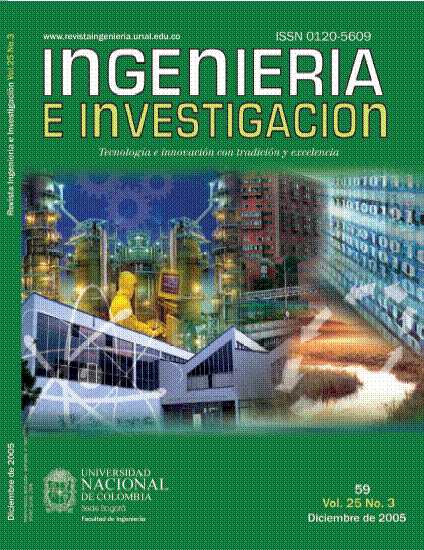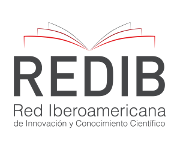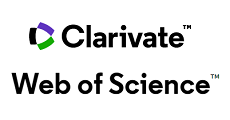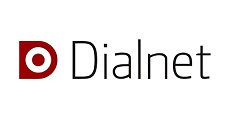A practical approach to scheduling examinations
Programación de exámenes: un enfoque practico
DOI:
https://doi.org/10.15446/ing.investig.v25n3.14667Keywords:
exam scheduling, room allocation, user interaction, spreadsheet based system, simulation (en)programación de examen, asignación de salones, interacción con el usuario, sistema basado en hoja electrónica, simulación (es)
Downloads
The scheduling of exams is a well-studied combinatorial optimisation problem. However, the growth in student numbers and the advent of modularity in many institutions of higher education has resulted in a significant increase in its complexity, imposing even more difficulties on university administrators who must resolve situations, often without having recourse to any computerised aid. This paper presents a practical approach towards timetabling examinations, consisting of several phases. Such phases would include constructing a conflict matrix, selecting suitable rooms for use when scheduling exams, establishing groups of courses which can be timetabled at the same time so that clashes are not incurred, imposing restrictions for joint exams for all groups from any particular course or specifying an exam in particular, fixing the times and allocating rooms and making the timetable available to students, teachers and administrators.
La programación de exámenes es un problema de optimización combinatoria bien estudiado. A pesar de eso, el número creciente de estudiantes y la incorporación de la modularidad en muchas instituciones de educación superior ha resultado en un incremento significativo en su complejidad, imponiendo aún más dificultades a los administradores de la universidad, quienes deben encontrar una solución, a menudo sin la ayuda de un computador. En este artículo presentamos un enfoque práctico para la programación de los exámenes, constituido de varias etapas tales como: una para elaborar la matriz de conflictos, otra para seleccionar los salones apropiados en la programación de los exámenes, una otra conformar grupos de cursos que puedan estar programados a la misma hora sin ningún conflicto, otra para permitir restricciones en exámenes conjuntos para todos los grupos de cualquier asignatura o permitir especificaciones para cualquier examen particular, otra para definir la hora y la asignación del salón, y finalmente, otra para publicar la programación a los usuarios (estudiantes, profesores y administradores).
References
Broders final Examination Scheduling Comm ACM, 7, 494-498, 1964. DOI: https://doi.org/10.1145/355586.364824
Bullnheimer, Bernd. "An examination scheduling model to maximize student’ study time", 2nd international conference on the practice and theory of automated timetabling, 1997. DOI: https://doi.org/10.1007/BFb0055882
Burke, E. K.; D.G. Elliman y R. Weare. "A university timetabling system based on graph coloring and constraint manipulation", Department of computer science, University of Nottingham, UK.
Burke, E. K.; RP. Newall y R. F Weare. "A memetic algorithm for university exam timetabling", En Edmund Burke y Peter Ross, editors, the practice and theory of automated timetabling. Selected papers from the 1st international conference, lecture notes in computer science 1153, pp. 241-250, Springer-Verlag, Berlin, 1996. DOI: https://doi.org/10.1007/3-540-61794-9_63
Burke, E. K.; D.G. Elliman y R. Weare. (1993b). "Automated scheduling of university exams". Proceedings of I.E.E: Colloquium on "resource scheduling for large scale planning systems", digest No. 1993 /144.
Carter, M. W.; G. Laporte y J.W. Chinneck. "A general examination scheduling system". Interfaces, 11: 109-120, 1994 DOI: https://doi.org/10.1287/inte.24.3.109
Carter, M. W. "A survey of practical applications of examinations timetabling algorithms", OR practice 34, 193-202,1986. DOI: https://doi.org/10.1287/opre.34.2.193
Cole, A. J. The preparation of examination timetables using a small store computer. Comp. Jrnl 7, 117-121,1964. DOI: https://doi.org/10.1093/comjnl/7.2.117
Desroches, S.; Laporte, G; Rousseau, J.M. Horex, "A computer program for the construction of examination schedules", Infor 16, 294-298,1978. DOI: https://doi.org/10.1080/03155986.1978.11731709
Dutton, R. D. And Brigham R.C. "A new graph coloring algorithm comp", The Computer Journal, 24, 85-86,198. DOI: https://doi.org/10.1093/comjnl/24.1.85
Johnson, D. "Timetabling university examinations", Journal of the operations research society, Vol. 1, No. 41, pp. 39-47, 1990. DOI: https://doi.org/10.1057/jors.1990.5
Karp, R. M., "Reductibility among combinatorial problems", In complexity of computer computations, Plenum Press, New York,1972. DOI: https://doi.org/10.1007/978-1-4684-2001-2_9
Liam, T.; G. Merlot, Natashia Boland, Barry D. Huges; Peter J. Stuckey. "A hybrid algorithm for the examination timetabling problem", Department of mathematics and statistics and department of computer science and software engineering, the University of Melbourne, Victoria 3010, Australia, 2002.
Tehran, I A. "Un algorithme de coloration cahiers du center d'études do recherche opérationnelle", 17, 395-398,1975.
Welsh, D. J. A. And Powell, M. B. "An upper bound for the chromatic number of a graph and its application to timetabling problems" comp. Jrnl. 10, 85-86,1967 DOI: https://doi.org/10.1093/comjnl/10.1.85
Wong, Tony; Pascal, Cote; Paul Gely. "Final exam timetabling: A practical approach". Proceedings of the 2002 IEEE canadian conference on electrical & computer engineering, 2002.
How to Cite
APA
ACM
ACS
ABNT
Chicago
Harvard
IEEE
MLA
Turabian
Vancouver
Download Citation
CrossRef Cited-by
1. Imran Ali Chaudhry, Isam AbdulQader Elbadawi, Muhammad Usman, Muhammad Tajammal Chughtai. (2018). Minimising Total Flowtime in a No-Wait Flow Shop (NWFS) using Genetic Algorithms. Ingeniería e Investigación, 38(3), p.68. https://doi.org/10.15446/ing.investig.v38n3.75281.
Dimensions
PlumX
Article abstract page views
Downloads
License
Copyright (c) 2005 Luis Gerardo Astaiza A

This work is licensed under a Creative Commons Attribution 4.0 International License.
The authors or holders of the copyright for each article hereby confer exclusive, limited and free authorization on the Universidad Nacional de Colombia's journal Ingeniería e Investigación concerning the aforementioned article which, once it has been evaluated and approved, will be submitted for publication, in line with the following items:
1. The version which has been corrected according to the evaluators' suggestions will be remitted and it will be made clear whether the aforementioned article is an unedited document regarding which the rights to be authorized are held and total responsibility will be assumed by the authors for the content of the work being submitted to Ingeniería e Investigación, the Universidad Nacional de Colombia and third-parties;
2. The authorization conferred on the journal will come into force from the date on which it is included in the respective volume and issue of Ingeniería e Investigación in the Open Journal Systems and on the journal's main page (https://revistas.unal.edu.co/index.php/ingeinv), as well as in different databases and indices in which the publication is indexed;
3. The authors authorize the Universidad Nacional de Colombia's journal Ingeniería e Investigación to publish the document in whatever required format (printed, digital, electronic or whatsoever known or yet to be discovered form) and authorize Ingeniería e Investigación to include the work in any indices and/or search engines deemed necessary for promoting its diffusion;
4. The authors accept that such authorization is given free of charge and they, therefore, waive any right to receive remuneration from the publication, distribution, public communication and any use whatsoever referred to in the terms of this authorization.




























